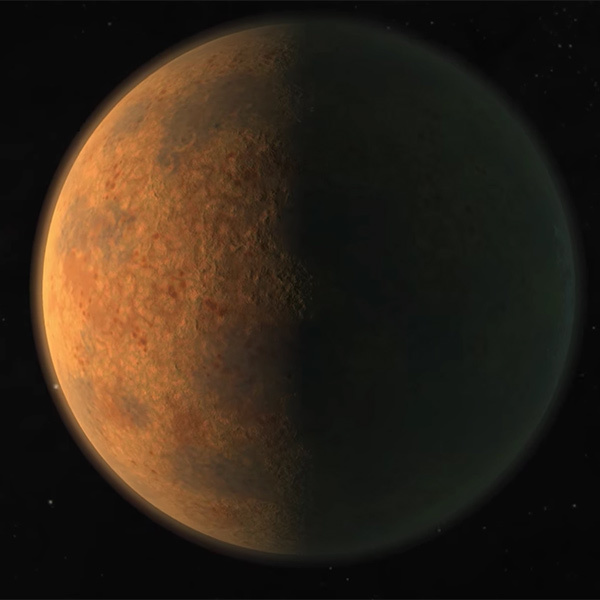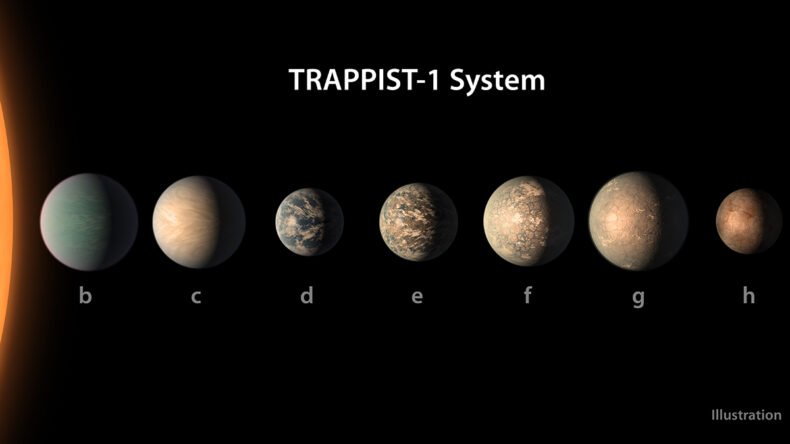Researchers has calculated the amount of heat energy coming from the exoplanet TRAPPIST-1c using James Webb Space Telescope.
The results suggest that atmosphere may be non-existent or extremely thin in this rocky exoplanet making it unfavourable for hosting life.
TRAPPIST-1c – Discovered in 2016
TRAPPIST-1c is an exoplanet orbiting the around the ultracool dwarf star TRAPPIST-1 located 40.7 lightyears away from earth.
TRAPPIST-1c was discovered on May 2, 2016 and was initially thought that it might have a thick carbon dioxide atmosphere like Venus since they had similar size and it receives similar amount of radiation from its host star as Venus from sun. But, TRAPPIST-1, its host star which has only about 0.05% of the luminosity of the sun, emits bright X-ray and ultraviolet radiation that can easily strip away a planet’s atmosphere. Another possibility is that, at the time of TRAPPIST-1c’s formation, enough water, carbon dioxide and other volatiles to make an atmosphere was not present.

More about the Findings
With a measured surface temperature of 107 0C, TRAPPIST-1c is now the coolest rocky exoplanet ever characterized based on thermal emission.
Using James Webb Space Telescope’s Mid-Infrared Instrument, the researchers were able to compare the brightness of light emitted by TRAPPIST-1c as it moved behind its host star to when it was beside the host star. The amount of mid-infrared light emitted by the exoplanet was calculated. This is directly related to its temperature, and in turn, to its atmospheric composition.
According to the statement by Sebastian Zieba, a graduate student at the Max Planck Institute for Astronomy in Germany and first author of the results paper published, the results are consistent with the exoplanet being a bare rock with no atmosphere, or having a really thin carbon dioxide atmosphere with no clouds.
The research was conducted as part of Webb’s General Observables Program 2304, one of the eight programs from Webb’s first year of science designed to help fully characterize the TRAPPIST-1 system.













